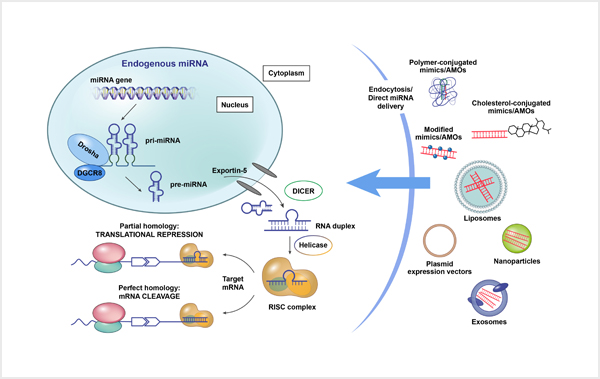
TECHNOLOGY
In life, the flow of genetic information occurs as described by the central dogma which notes that DNA guides the generation of RNA (transcription) and RNA guides the production of proteins (translation). Since all genetic information is stored in DNA, all downstream events are ultimately controlled by DNA regulation. Advances in life sciences and medicine have elucidated many specific mechanisms that regulate genetic information after transcription and translation. Throughout the evolutionary process, advanced life forms have used DNA as the primary source of genetic information. However, it has been proposed that RNA must have been the first and most commonly used genetic material (the RNA world), a hypothesis supported by the fact that many different types of RNAs have been identified and shown to be involved in regulating life. For instance, mRNA, tRNA, and rRNA are directly involved in the flow of information from DNA to protein, while microRNAs (miRNA), small non-coding RNA molecules, serve important roles in post-transcriptional gene regulation. miRNA have recently attracted much attention as a potential cure for various diseases based on their ability to suppress the expression of pathologic genes. Curamys has identified a specific miRNA that is a key etiological factor in the pathogenesis of rare diseases including Duchenne muscular dystrophy and Lou Gehrig’s disease (i.e., amyotrophic lateral sclerosis) and is devoted to develop therapies leveraging this miRNA. Unlike small molecule therapies (i.e., chemicals) that are not target-selective, miRNA can: i) selectively regulate specific genes, ii) block disease progression, iii) more effectively transmit desirable genes to cells compared to direct administration of specific genes, and iv) minimize side effects by utilizing materials that exist within the cell.

 TOP
TOP


 info@curamys.com
info@curamys.com